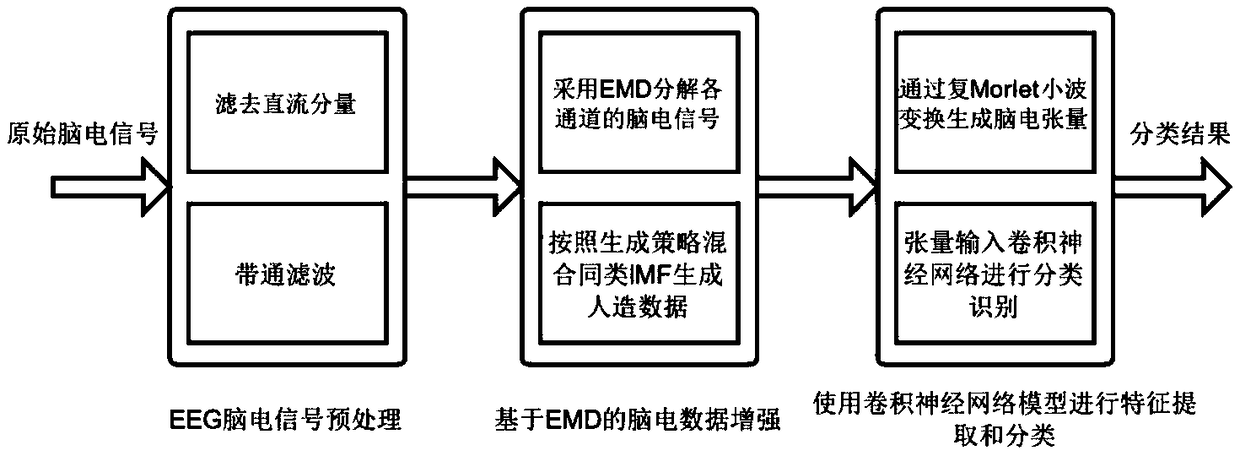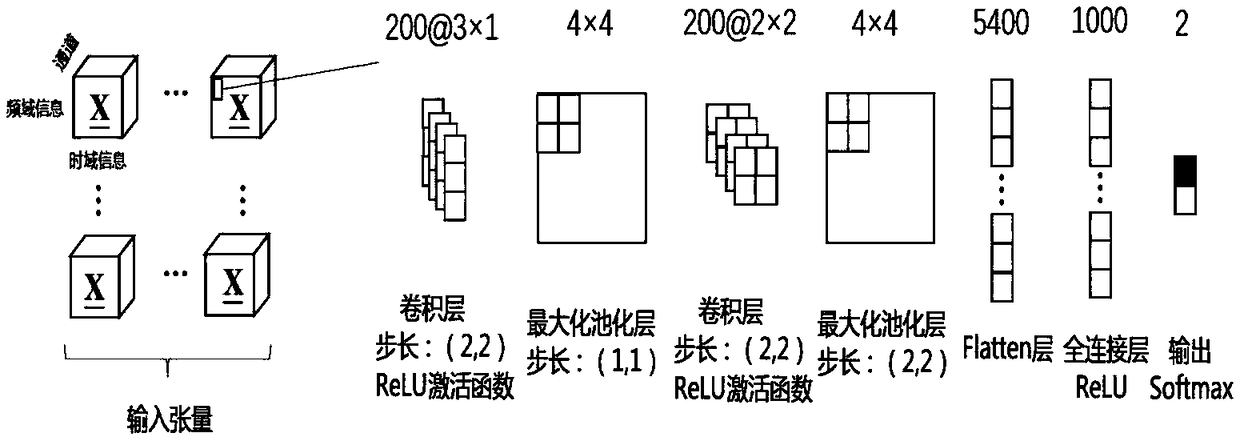SSVEP EEG classification method based on convolution neural model enhanced by EMD data
A convolutional neural and classification method technology, applied in the field of artificial intelligence and pattern recognition, brain-computer interface, SSVEP EEG classification, to improve the classification effect, high application prospects, and reduce fatigue
- Summary
- Abstract
- Description
- Claims
- Application Information
AI Technical Summary
Problems solved by technology
Method used
Image
Examples
Embodiment Construction
[0025] In order to explain in detail the technical content, structural features, achieved goals and effects of the technical solution, the following will be described in detail in conjunction with specific embodiments and accompanying drawings.
[0026] The present invention proposes an SSVEP EEG classification method based on a convolutional neural model enhanced by EMD data. The method first preprocesses the original SSVEP EEG data, and after preprocessing, adopts the empirical mode decomposition method to decompose the original SSVEP data, and mixes and generates a large number of them. The artificial EEG data conforms to the time-frequency domain characteristics of the original EEG signal. The artificial EEG data is combined with the original EEG data for the parameter training of the neural network, so as to achieve the effect of effectively training network parameters with a small amount of EEG data. Finally, the complex Morlet wavelet transform is used to generate the EE...
PUM
 Login to View More
Login to View More Abstract
Description
Claims
Application Information
 Login to View More
Login to View More - R&D
- Intellectual Property
- Life Sciences
- Materials
- Tech Scout
- Unparalleled Data Quality
- Higher Quality Content
- 60% Fewer Hallucinations
Browse by: Latest US Patents, China's latest patents, Technical Efficacy Thesaurus, Application Domain, Technology Topic, Popular Technical Reports.
© 2025 PatSnap. All rights reserved.Legal|Privacy policy|Modern Slavery Act Transparency Statement|Sitemap|About US| Contact US: help@patsnap.com



